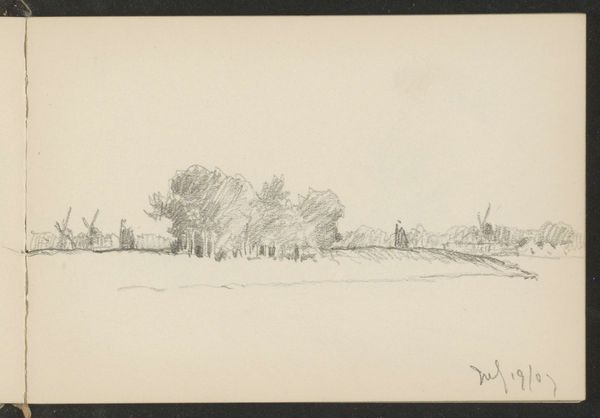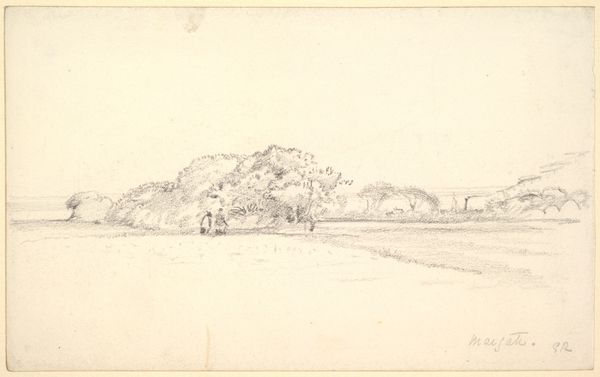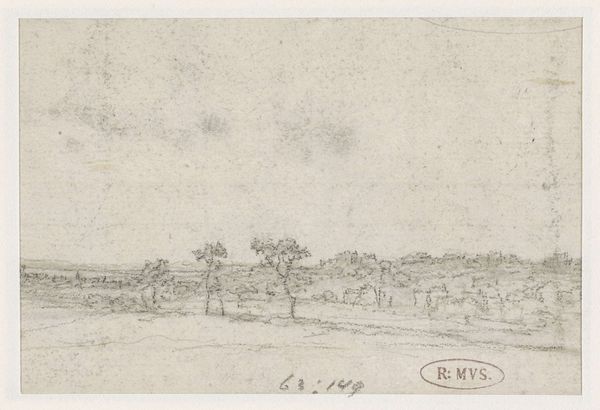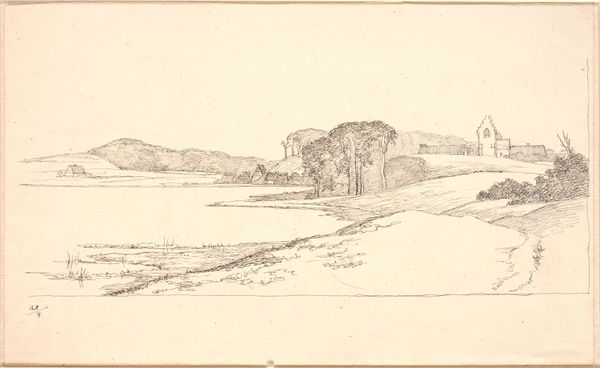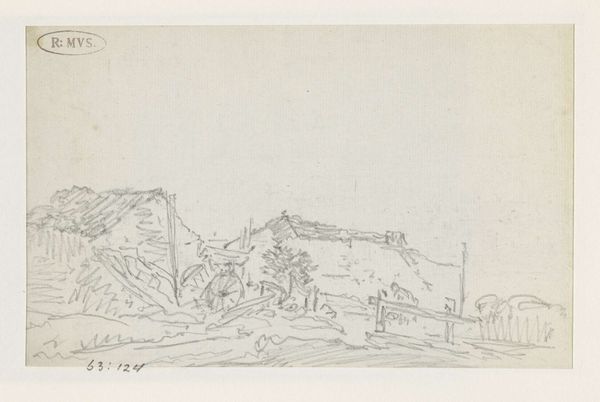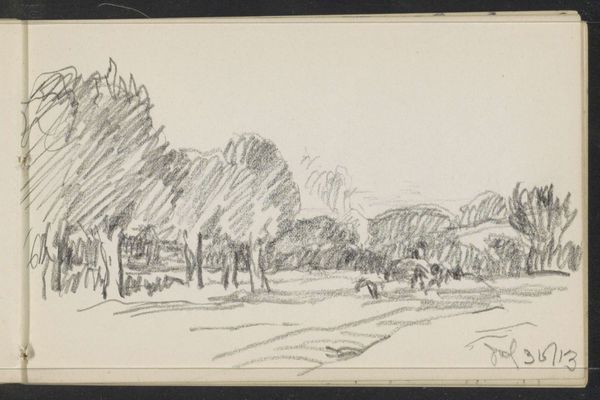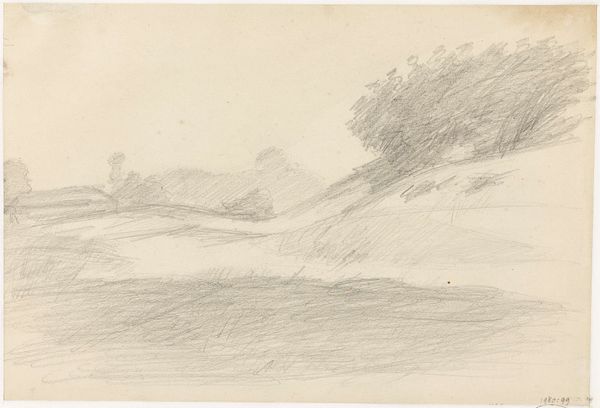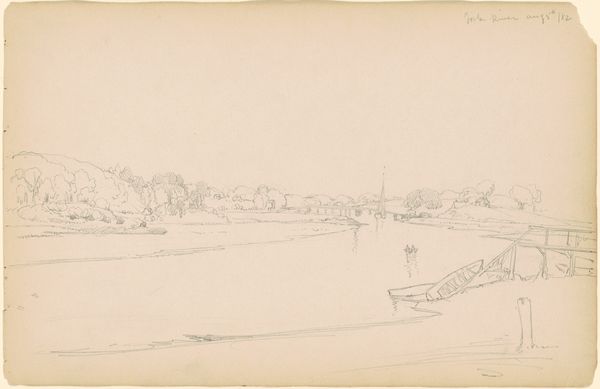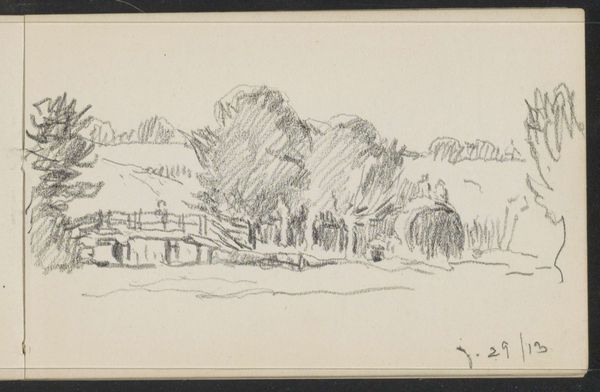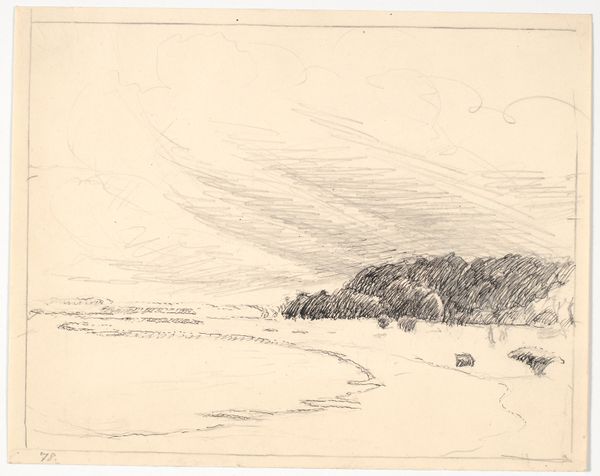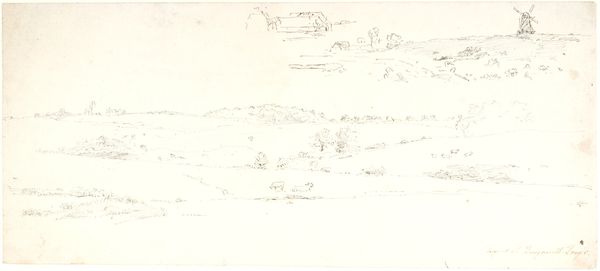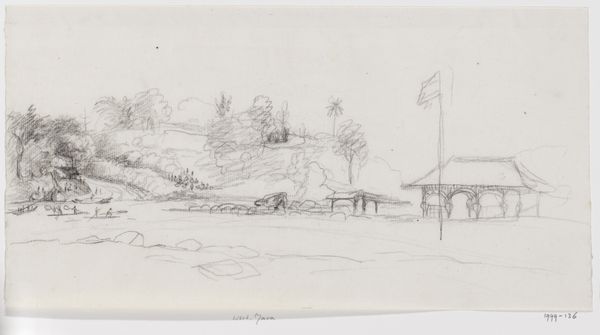
drawing, pencil
#
drawing
#
pencil sketch
#
landscape
#
romanticism
#
pencil
Dimensions: height 88 mm, width 118 mm
Copyright: Rijks Museum: Open Domain
Editor: Here we have "Houses Lying on a Slope," a pencil drawing by Georges Michel, likely created sometime between 1773 and 1843. It feels like a fleeting glimpse, almost ephemeral in its execution. What strikes you about this work? Curator: Well, looking at this drawing through a materialist lens, I am particularly interested in the relationship between Michel, the pencil, and the paper used. This was likely not a mass-produced, standardized pencil as we know them today. The graphite composition, the wood it was encased in – these all speak to a specific availability of resources and a particular craftsmanship. Notice how the lines vary in weight; was that down to pressure, or the qualities inherent to the pencil itself? Editor: That's fascinating. I hadn’t thought about the pencil itself as being so central. I just assumed… pencil! Curator: The labour involved is crucial too. Consider the time investment in crafting a landscape, but rendered as a quickly captured impression. Michel is employing the readily available technology of pencil and paper in response to the changing urbanization in 19th Century Europe. Were these materials expensive? Who would have had access to them? And why create such a humble sketch as opposed to a finished painting? Editor: So you're saying the drawing material and how the artist made choices reflects something about the larger social context in that time? Curator: Exactly! What did Romanticism actually mean for those involved in its production? How do you think this image relates to consumption habits and consumerism? Editor: This drawing makes me think about art production and even just the work people had access to do in Michel's time. This makes me want to spend time considering more carefully how it was all done. Curator: Precisely! And by questioning the relationship to the final art object, one might develop new insights on artwork’s process of making.
Comments
No comments
Be the first to comment and join the conversation on the ultimate creative platform.
